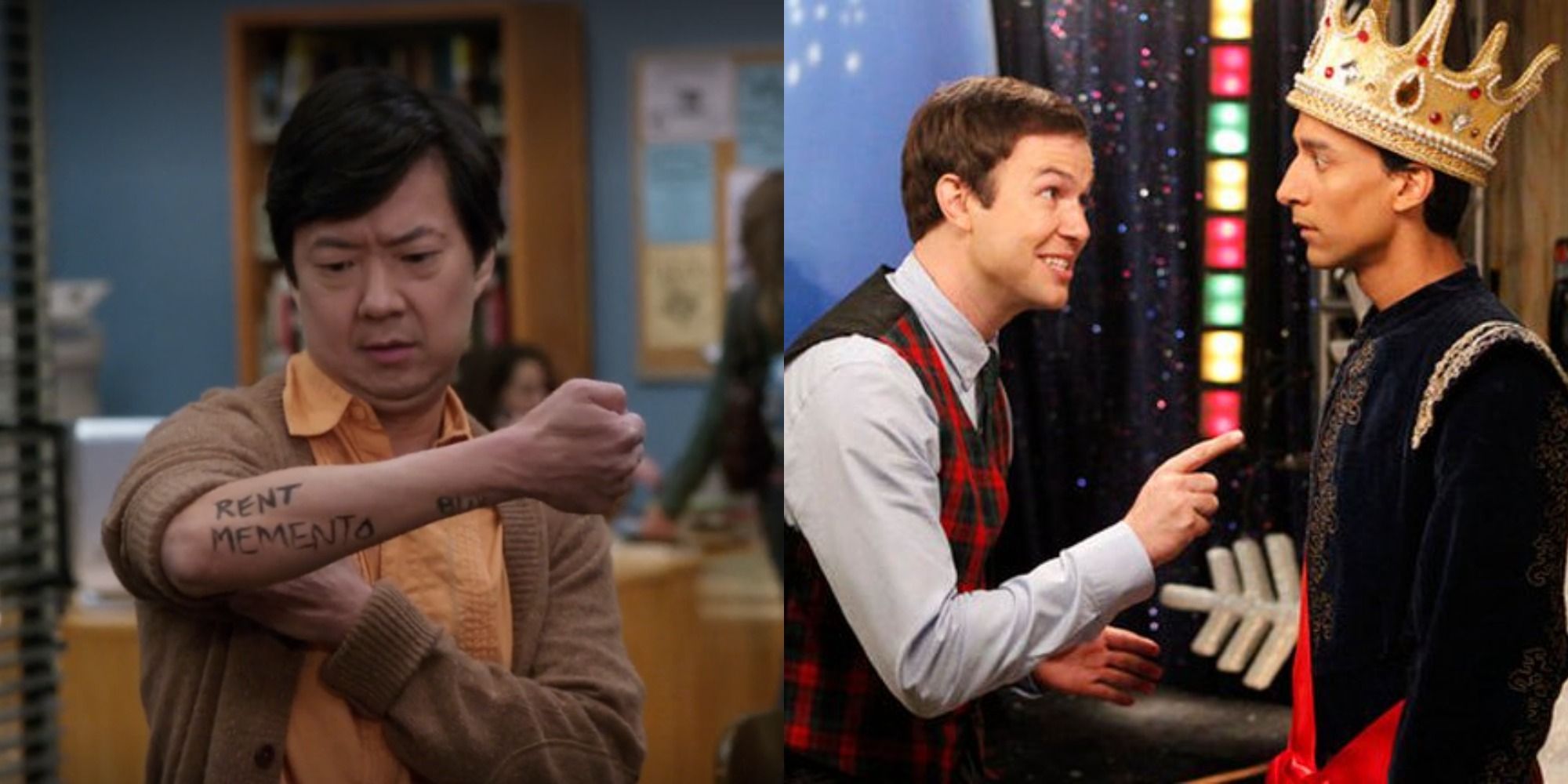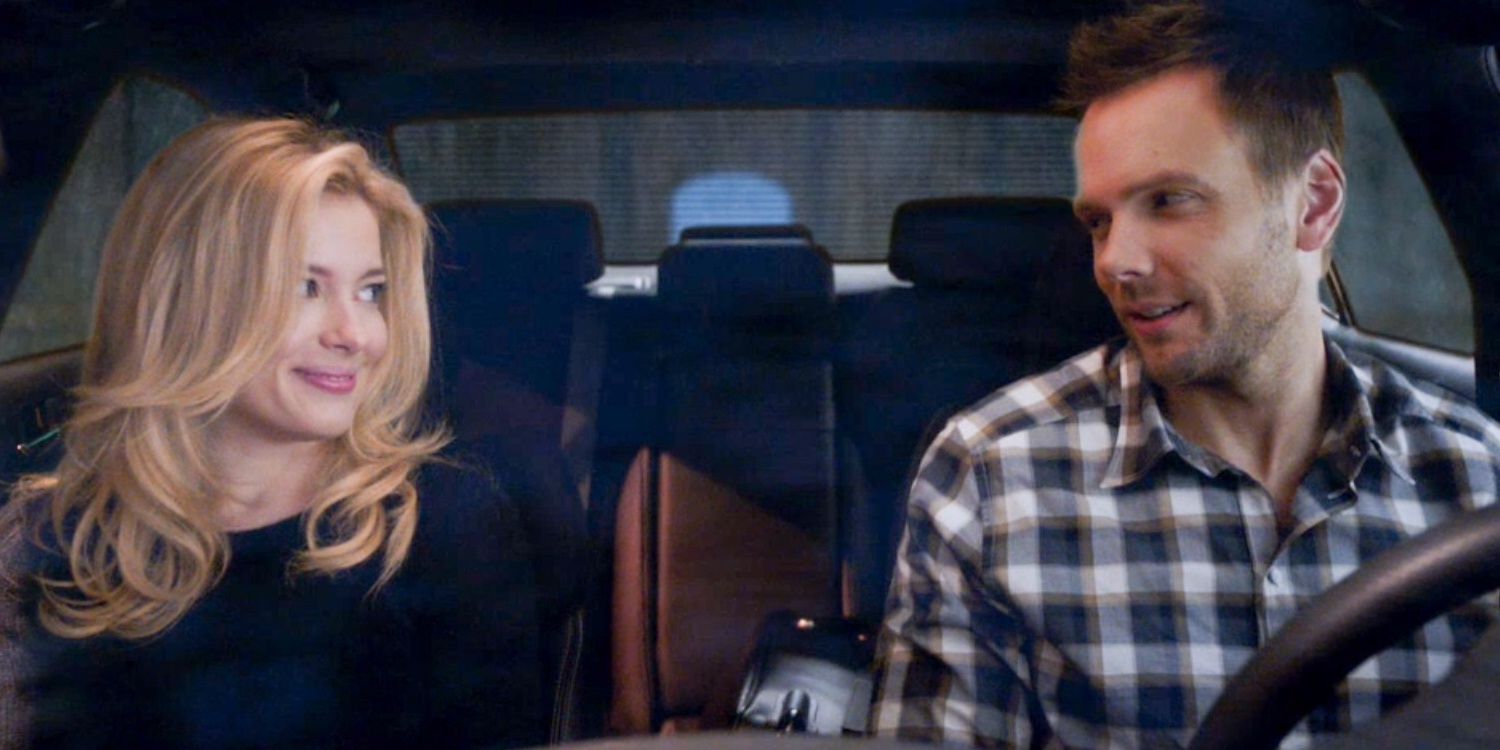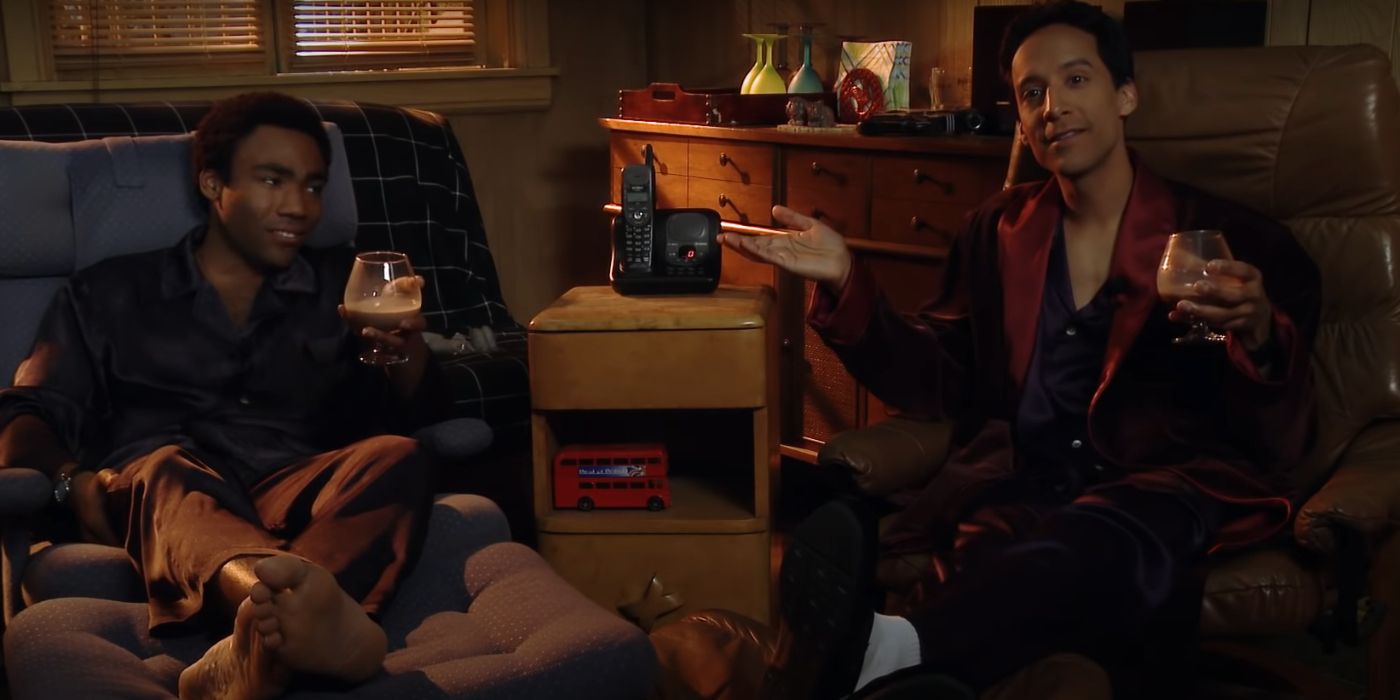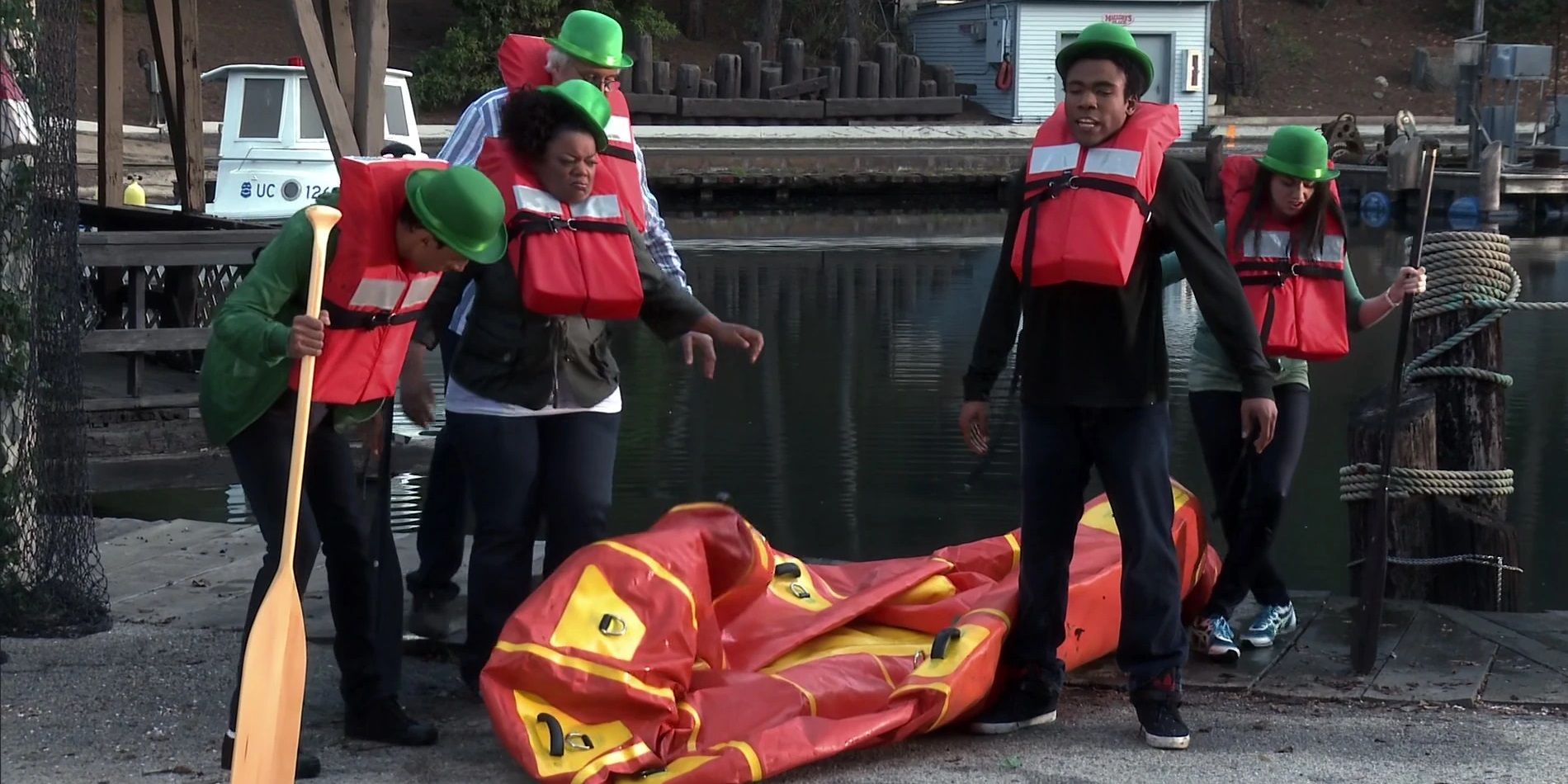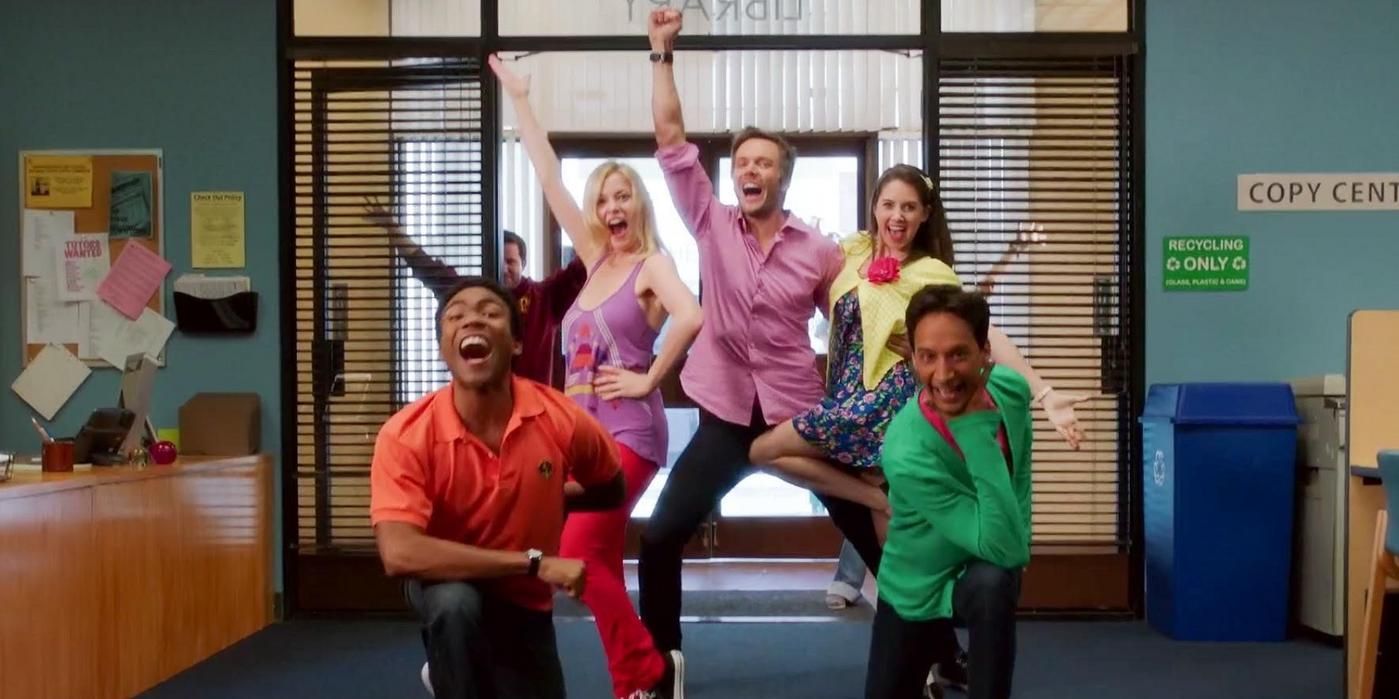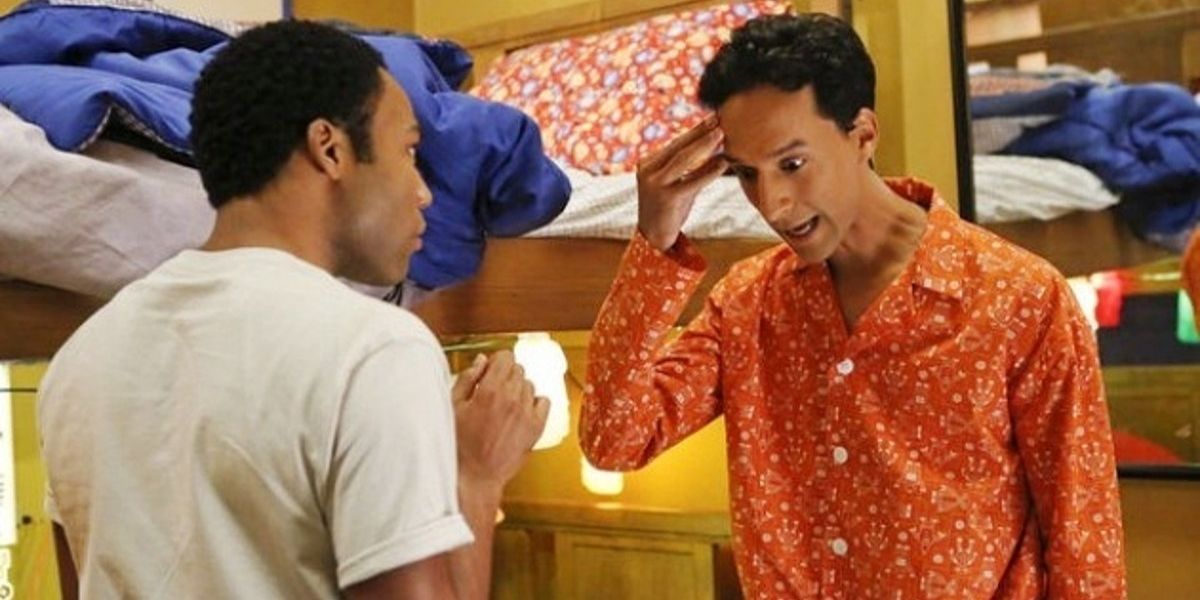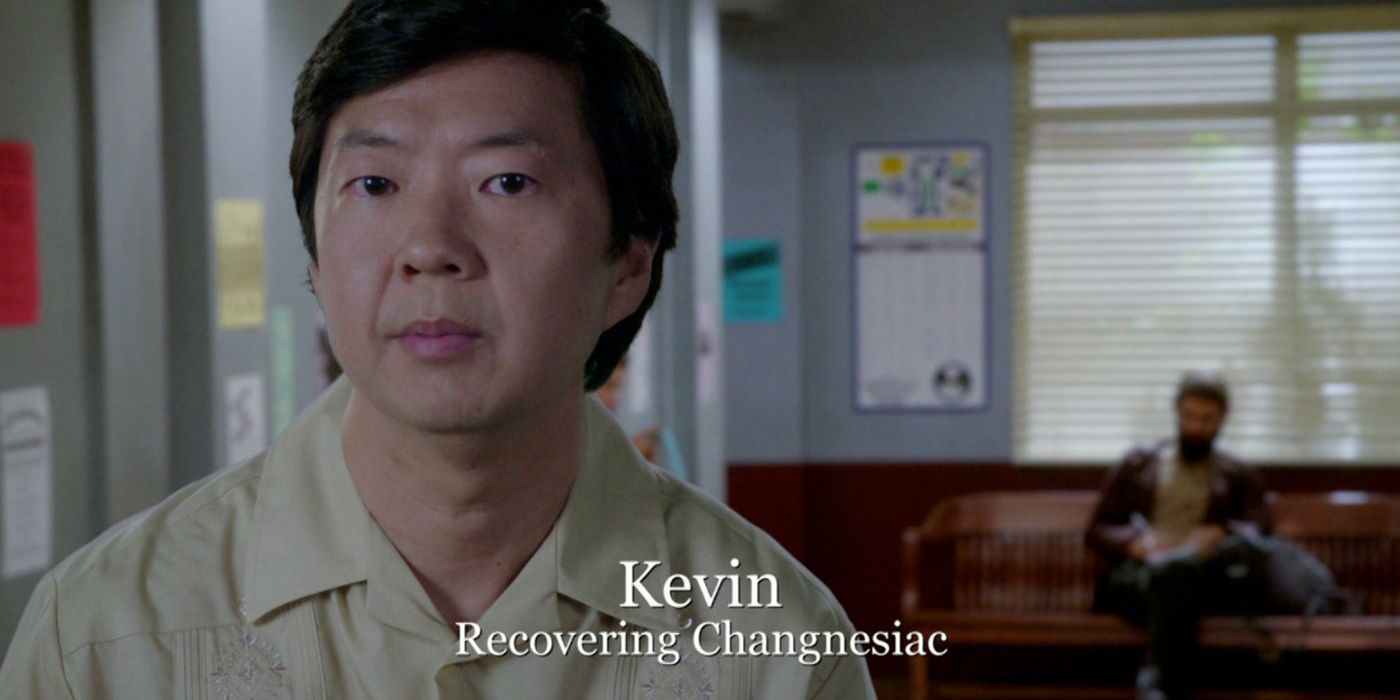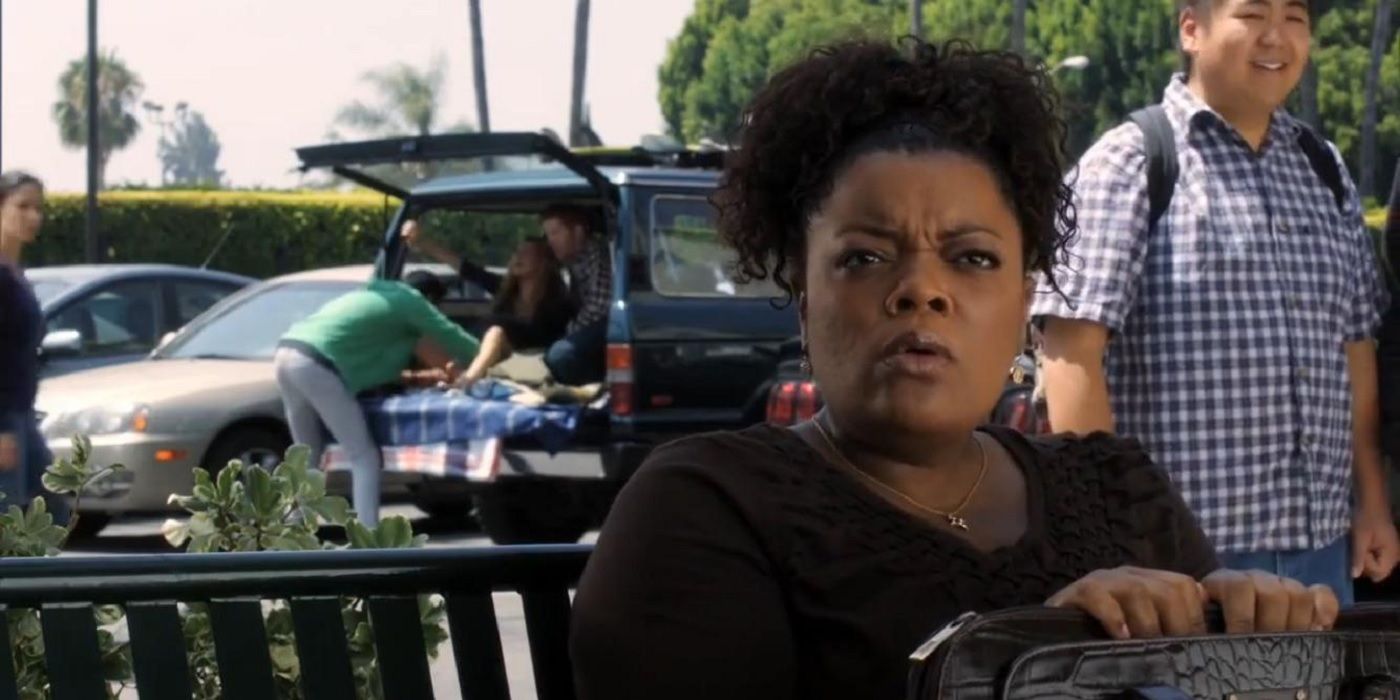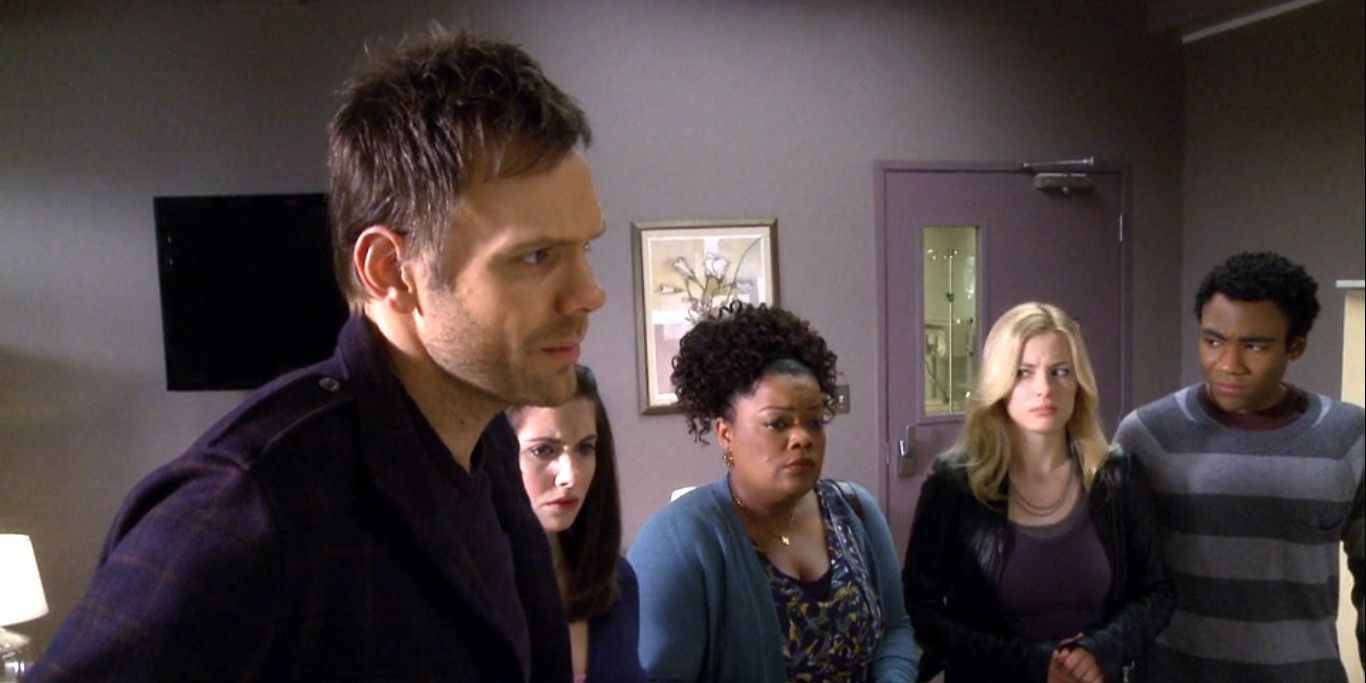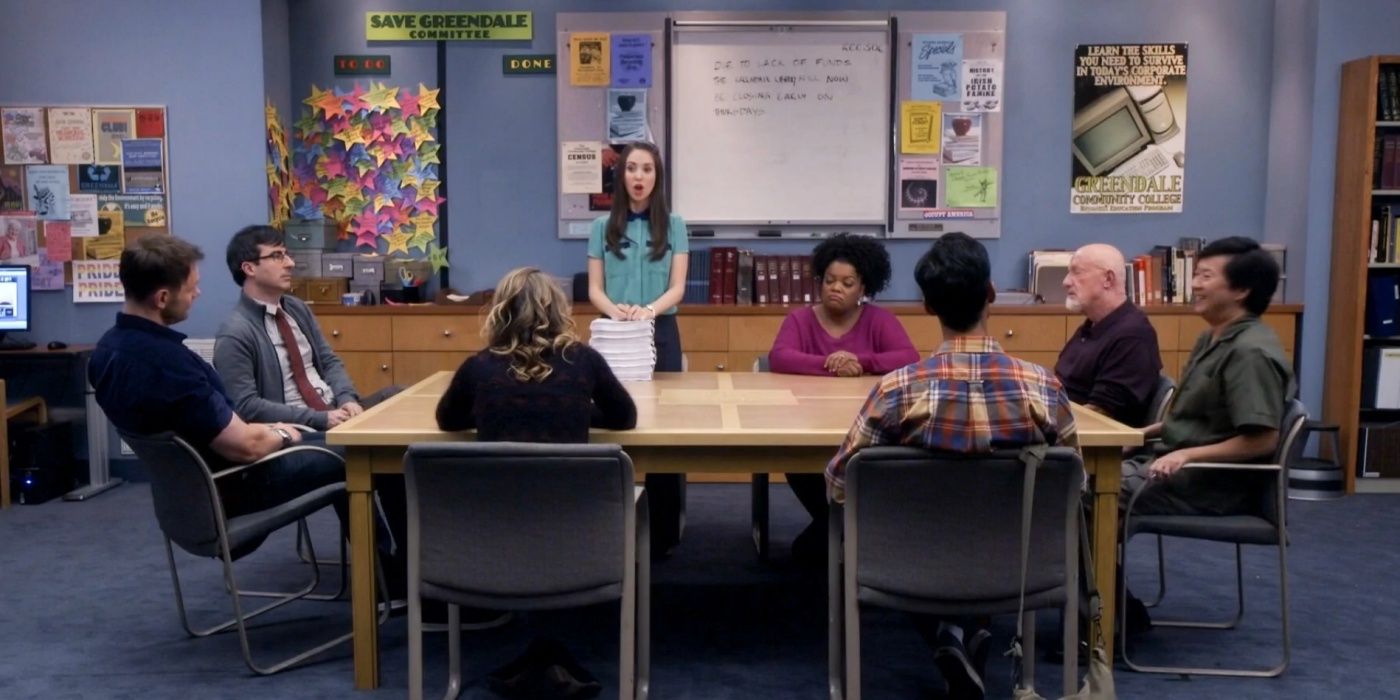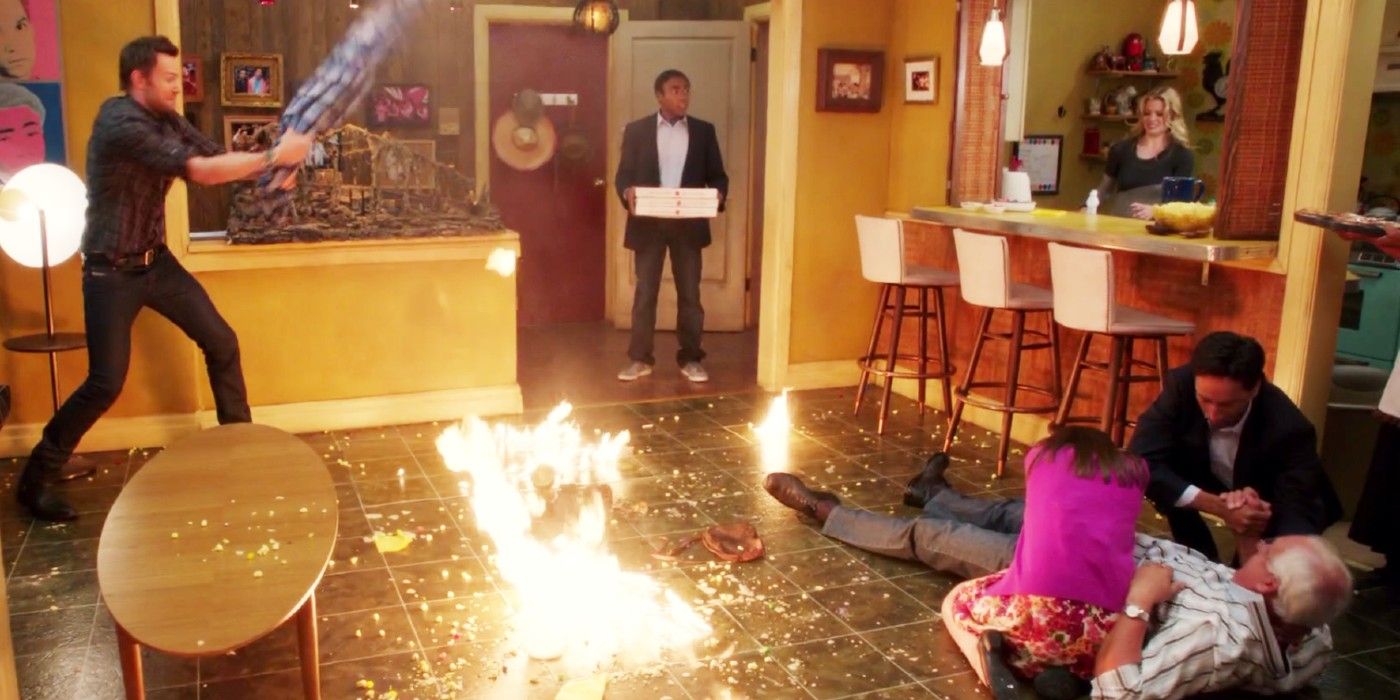Often, audiences know what to expect from a sitcom's plot and its characters. This is because most sitcoms follow a set of tropes (recurring themes), which makes them all seem similar to each other. However, the NBC sitcom Community is more metafictional. It puts a spin on the familiar tropes that viewers have come to recognize.
Community is about a study group at the college of Greendale. While it's a sitcom, it frequently contrasts or parodies the stereotypes of other shows in its genre. It continuously subverts the audience's expectations, which is entertaining and refreshing.
Love Triangle
Jeff finds himself in a love triangle in “Pascal’s Triangle Revisited.” His ex-girlfriend Slater wants them to get back together. When Britta hears about this at the end of the year dance, she declares that she loves him. Instead of choosing one or the other, however, Jeff walks out alone.
But, Jeff runs into Annie outside. The two talk and end up kissing. The first season set up the triangle between Jeff, Britta, and Slater, so fans are pleasantly surprised when Jeff chooses Annie instead.
Couch Gags
A couch gag is when a sitcom ends an episode with one last bit. It’s a tag that helps wrap up the episode. However, Community’s couch gags break the fourth wall because most of them occur on an actual couch.
Troy and Abed sit on a couch at the end of many episodes and tell viewers a final joke. A few couch gags include them rapping in Spanish, hosting a talk show, and becoming stop-motion animated characters.
Clip Shows
Instead of writing new material, clip shows include montages of scenes from previous episodes. Usually, the flashbacks that relate to the current plot. But Community does its clip show a little differently than other sitcoms in the episode “Paradigms of Human Memory.”
Instead of showing old scenes, all the clips in the episode are new. Also, all the memories are out of context. The group competes in a jump rope competition, goes on a camping trip, and gets involved in a rafting incident.
Musical Episode
Musical episodes are a fun break from a sitcom's regular format. The characters sing either popular or original songs. Sitcoms such as Scrubs and That '70s Show have done musical episodes.
Community's musical episode "Regional Holiday Music" is a bit different. When the study group refuses to fill in for the glee club, they are lured in one by one. The musical numbers are like a virus that infects the group. The episode feels more of a horror story than an up-beat musical special.
Body-Swap
The body-swap trope is commonly used in sitcoms. It's a supernatural-like occurrence where one character goes into the body of another. In contrast, Troy and Abed in "Basic Human Anatomy" just pretend to switch bodies.
Troy and Abed act as if they body swapped during Troy and Britta's anniversary. But instead of the trope being used to help them understand each other, it's used so Troy can avoid breaking up with Britta. Additionally, Troy's childish behavior displays that he's not ready for a serious relationship.
Amnesia
Sitcoms use amnesia to bring a dramatic element to what is otherwise a funny show. For example, in the finale of Full House, Michelle gets amnesia. The family has to help her remember her life. Community, however, uses amnesia as a comedic tool rather than an emotional one.
After attempting to take over the school, Chang returns to campus with amnesia in the fourth season. Or, as the characters call it, "Changnesia." However, his condition is actually a ruse, and it becomes a recurring gag.
Brick Joke
A brick joke is when a joke is told without a punchline, making it seem irrelevant. But, the joke comes back again and provides the lister with a humorous form of pay-off.
In "The Psychology of Letting Go," viewers can see Abed delivering a baby in the background. Fans are left with no explanation until Abed mentions it in "Applied Anthropology And Culinary Arts" when Shirley goes into labor. Most sitcoms don't take almost an entire season to tell a brick joke, but Community is not like other sitcoms.
Mockumentary
In mockumentary shows, a camera crew follows around the characters. It also involves “talking heads” where the characters speak to the camera. This is the premise of sitcoms such as The Office and Parks And Recreation.
Community subverts mockumentary tropes in “Intermediate to Documentary Filmmaking.” Abed films the group visiting Pierce in the hospital. Instead of the camera crew being ambiguous, Abed continuously interjects. Abed also includes voiceovers and montages to suggest a thematic connection even though there isn't one.
Bottle Episode
Bottle episodes of sitcoms are usually fan-favorites and the cheapest to make. The characters are stuck in one location for the entirety of the episode. In "Cooperative Calligraphy," the group remains in the study room to find Annie's lost pen.
Abed states that they're in a bottle episode at the very beginning. Also, bottle episodes often are filler and lack significance. But Community utilizes the trope to foreshadow future plot points, including the monkey stealing their stuff and Jeff and Britta hooking up secretly.
Alternate Universe
Sitcoms often explore what-if scenarios in the characters’ lives. For example, in the Friends episode “The One That Could Have Been,” audiences see what would have come of Rachel if she had married Barry. Community, however, takes the alternate timeline premise to a new level.
In “Remedial Chaos Theory,” Abed says that the group will create six different timelines by rolling a dice. Fans then watch as the different timelines play out. Additionally, the “Darkest Timeline” continues to play a significant role throughout the series.

